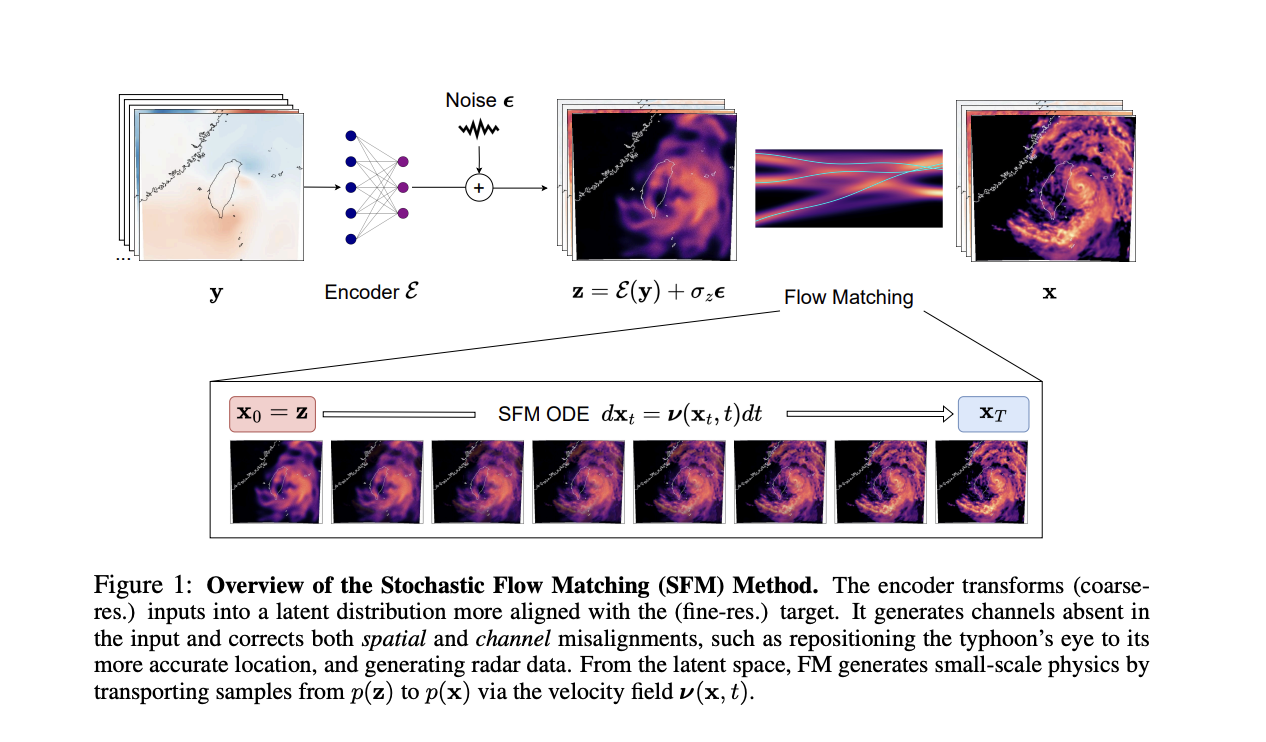
Advancements in Weather Forecasting with AI
Recent developments in atmospheric science have revolutionized weather forecasting and climate modeling. High-resolution data is essential for accurately predicting local weather events, from daily forecasts to disaster preparedness. This innovation benefits various applications, enhancing how communities respond to weather-related challenges.
Challenges in Current Weather Models
One key challenge is the mismatch between large-scale weather data and the fine details needed for precise local predictions. Typical data inputs are often too coarse to capture critical atmospheric features like thunderstorms. Limited observational data further complicates modeling efforts, often leading to inaccuracies.
Traditional Solutions Are Evolving
Traditional methods, like conditional diffusion models, show promise but struggle with the complexities of atmospheric dynamics. Past strategies focused on modeling large, guaranteed patterns before adding small-scale details, but this approach can lead to overfitting when data is limited.
Introducing Stochastic Flow Matching (SFM)
A collaboration between NVIDIA and Imperial College London has led to a breakthrough called Stochastic Flow Matching (SFM). This innovative method effectively aligns and generates high-resolution weather data, addressing the unique challenges of atmospheric modeling.
How SFM Works
SFM employs an encoder to transform coarse data into a format that aligns more closely with fine-scale targets. This process allows for realistic predictions of small-scale weather features. By dynamically adjusting noise levels, SFM minimizes overfitting, leading to higher accuracy in predictions.
Proven Success in Real-World Applications
In tests using real-world datasets, such as weather data from Taiwan, SFM outperformed traditional models significantly. For instance, in converting weather data from 25 km to 2 km scales, SFM showed lower error rates and better calibration metrics compared to conventional methods.
Benefits of SFM
SFM successfully balances the relationship between large-scale and small-scale data, enhancing the precision of weather models. This framework allows for accurate simulations that can significantly improve climate resilience and local weather predictions.
Join the AI Revolution
Explore how AI can transform your business and enhance operational efficiency. For AI integration and management advice, connect with us at hello@itinai.com. Stay updated on AI insights through our Telegram and @itinaicom.
Don’t forget to check out the research paper and follow us on our social media platforms to stay connected!






















![Black Forest Labs Unveiled FLUX1.1 [pro] and the BFL API: The Ultimate Solution for Creative Professionals Seeking High-Performance Image Generation and Scalable API Integration](https://itinai.com/wp-content/uploads/2025/05/itinai.com_a_realistic_user_interface_of_a_modern_AI-powered__ede36b29-c87b-4dd7-82e8-f237384a8e30_3.png)


